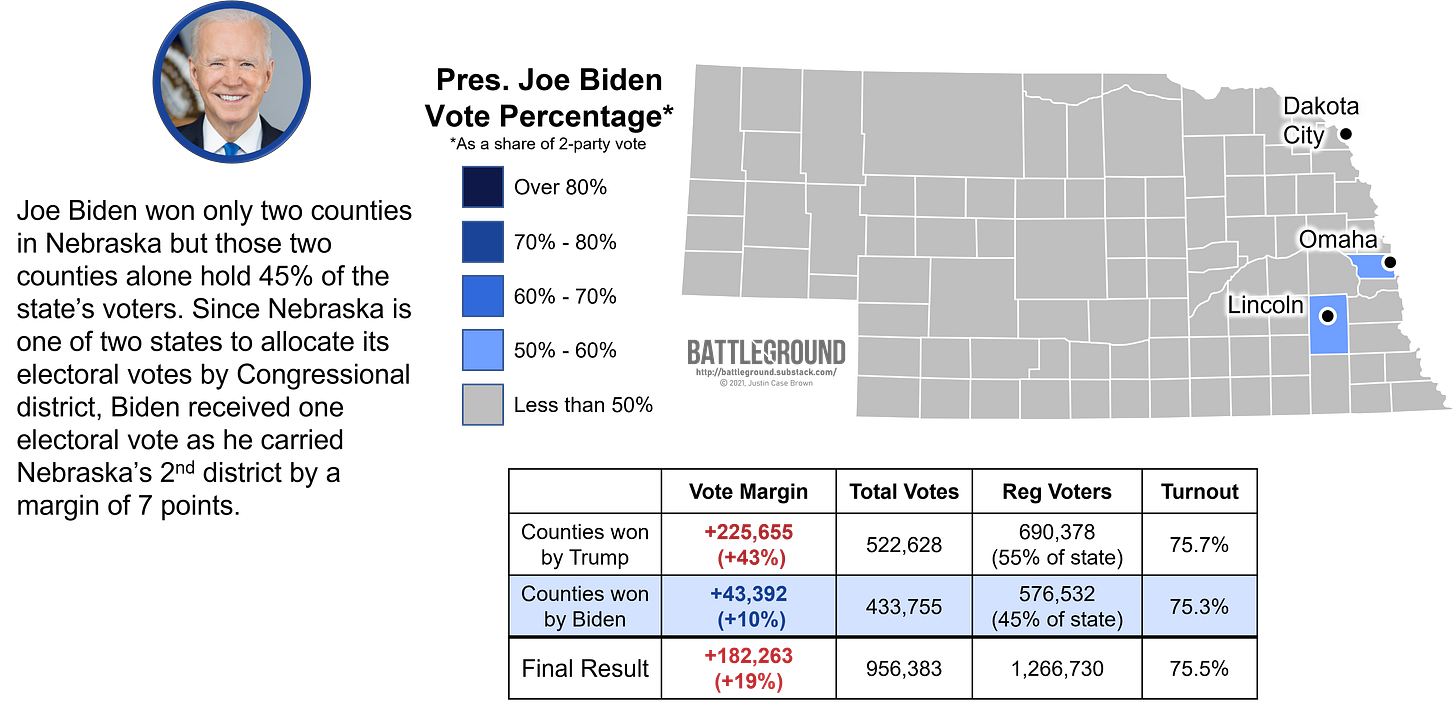This post marks my 50th post, which means that this is the final state in my 2020 presidential election review. After a little over two months of posts, The Fifty is finally complete! With that said, definitely take a look into the archives and peruse some of the previous states that I might have covered before you found Battleground. (Some of my personal favorites include Iowa, Kentucky and Virginia.)
I also hit a milestone today, 50 subscribers!! Such a fitting accomplishment for the day.
So what’s next?
Next week I’ll be doing another recap week to round-up these final batches of states and start planning for my next projects. While I still plan on covering the once-a-decade redistricting process, I’m going to wait a bit longer until more states start submitting their maps for approvals. In the meantime, I’m going to take a couple of weeks to look at statehood movements. Despite the fact that no new states have been admitted to the US since the late 1950s, there have been a plethora of movements to redraw political boundaries across the country (like the Greater Idaho Movement or the ephemeral plan to split California into several pieces.) I’m excited to dive into this slightly more imaginative project, dissecting what the future of our country could look like.
Now that all of the celebration and housekeeping is out of the way, let’s dive into the final state in this series: Nebraska.
Topline Takeaways
Joe Biden became the second Democratic presidential candidate in Nebraska history to split its electoral votes after winning the state’s 2nd congressional district.
Despite losing the state’s cities, Donald Trump enjoyed another landslide victory in Nebraska, besting Biden by 19-points.
Biden’s win in the 2nd congressional district was moreso due to Trump’s failures rather than Democratic success as the district’s Republican incumbent representative, Don Bacon, outperformed Trump and won re-election.
In-Depth Insights
Joe Biden’s base of support mirrors Clinton’s in the election prior: he managed to win the state’s two most populous counties, home to Omaha and Lincoln. Together, these two counties hold roughly 45% of the state’s voters, most of whom are more liberal than those living in the more rural portions of the state. Since Nebraska allocates its electoral votes by congressional district, Joe Biden’s strong showing in and around Omaha led him to become the second Democratic presidential candidate ever to split Nebraska’s electoral votes.
Biden’s success in the state’s 2nd congressional district is more due to the fault of Trump rather than shifting support toward the Democratic party. The district is home to a large proportion of suburban voters who align with the more traditional, establishment wing of the Republican party. Trump’s populist rhetoric alienated many moderate, suburban voters across the country and several saw his inability to hold onto Nebraska’s 2nd congressional district as emblematic of his increased unpopularity. After winning this district by just 2 points in 2016, he went on to lose to Biden by 6 points in 2020. Even more damning for Trump, many of these voters split their tickets as Don Bacon, the incumbent Republican House rep for the district, was re-elected and outperformed Trump’s showing in the district by 4 points.
While Donald Trump lost one electoral vote to Biden in 2020, he didn’t bleed much support in the rest of the state. This is primarily because Nebraska is a reliable Republican stronghold, supporting Republicans presidential candidates in every election since 1964. In addition, no Democrat has won any statewide election in Nebraska since former Governor Ben Nelson’s reelection to the US Senate in 2006. So despite Donald Trump’s loss of votes in and around the state’s urban centers, he still had more than enough support from conservative voters in the state’s rural counties to still nab a 19-point landslide victory.
Forecasting the Future: In 2022, Nebraska will have an open governor’s seat as the current governor, Pete Ricketts, is term-limited and can not run for re-election. Charles Herbster has already emerged as the Republican frontrunner, although the field of candidates has only grown around him as next year’s election approaches. He’s widely expected to receive an endorsement from Donald Trump as he’s a friend of the former president. The big question is if voters will punish him for his proximity to the insurrection on January 6th. Currently, in the middle of a race where every candidate is trying to “out-Trump” one another, many Nebraska voters may instead look at his presence near the Capitol on that day as a positive; passing the “Trump fealty test.” Even with a controversial nominee like Herbster, all signs point to continued Republican domination within the state as Democrats simply don’t have the votes (nor the financial support) to nab a win in Nebraska.
Leftover Links
Nebraska’s proposed redistricting plan is already causing controversy as Republicans attempt to redraw a new 2nd district in their favor.
After a long history of choosing not to invest campaign dollars in the state, the Democratic National Committee has created a “Red State Fund” meant to help field more candidates and bolster campaigns in long-shot red states like Nebraska.





